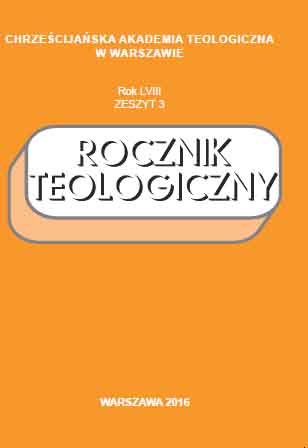Charakterystyka śpiewów liturgicznych w nabożeństwach starotestamentowych i wczesnochrześcijańskich
Characteristic of the liturgical chants in the Old Testament and early Christian’s services
Author(s): Gabriel BiałomyzySubject(s): Fine Arts / Performing Arts, Music, Theology and Religion
Published by: Wydawnictwo Naukowe ChAT
Keywords: history of music; music of early Christianity; liturgical chant; monody; Old Testament service; liturgics
Summary/Abstract: Music, in the reason of impressive strength of influence to man and specific ability of expression, was always connected with the sphere of sacrum. Although in the Old Testament singing psalms was important moment of celebration of the services in that time. The liturgical singing characterized this simplicity which characterized vocal forms of ancient times. Melodic formulas were remembered and transmitted to the oral tradition, but liturgical songs were performed in the form of recitation and traditionally understood singing. It was performed by unison, diatonic and showed no enharmonic and chromatic characteristics. In the days of king David there was the biggest flourishing of synagogue singing. Among others, there were educated singers, distinguished choirs which vocal became more varied and alternating. Singing was also very important mean in contact with God for the first Christians. Although Judaic tradition rooted in the consciousness of the faithful still dominated both of the rituals and the accompanying musical expression, growing faith and religious affiliation caused changes in previous musical aesthetics. There took place a return to the sources. There sung hymns, psalms and songs with simple musical melodies, thus obtained expression which was recognized most important – words. Through the common praise of the Resurrected Christ believers of different cultures and nations were united in thought and prayer, deriving comfort and spiritual joy and also forming their new religious identity.
Journal: Rocznik Teologiczny
- Issue Year: 58/2016
- Issue No: 3
- Page Range: 455-469
- Page Count: 15
- Language: Polish

